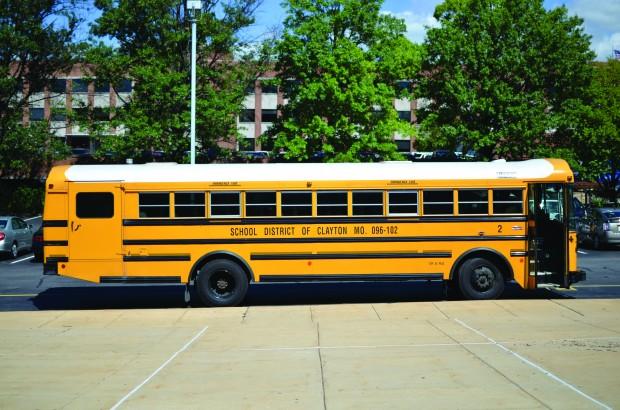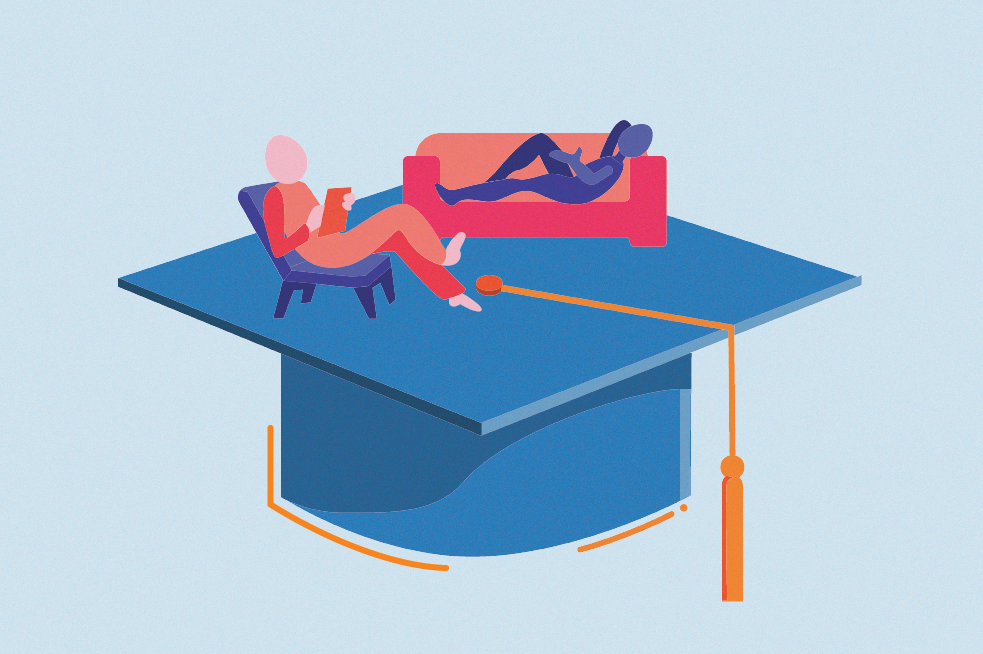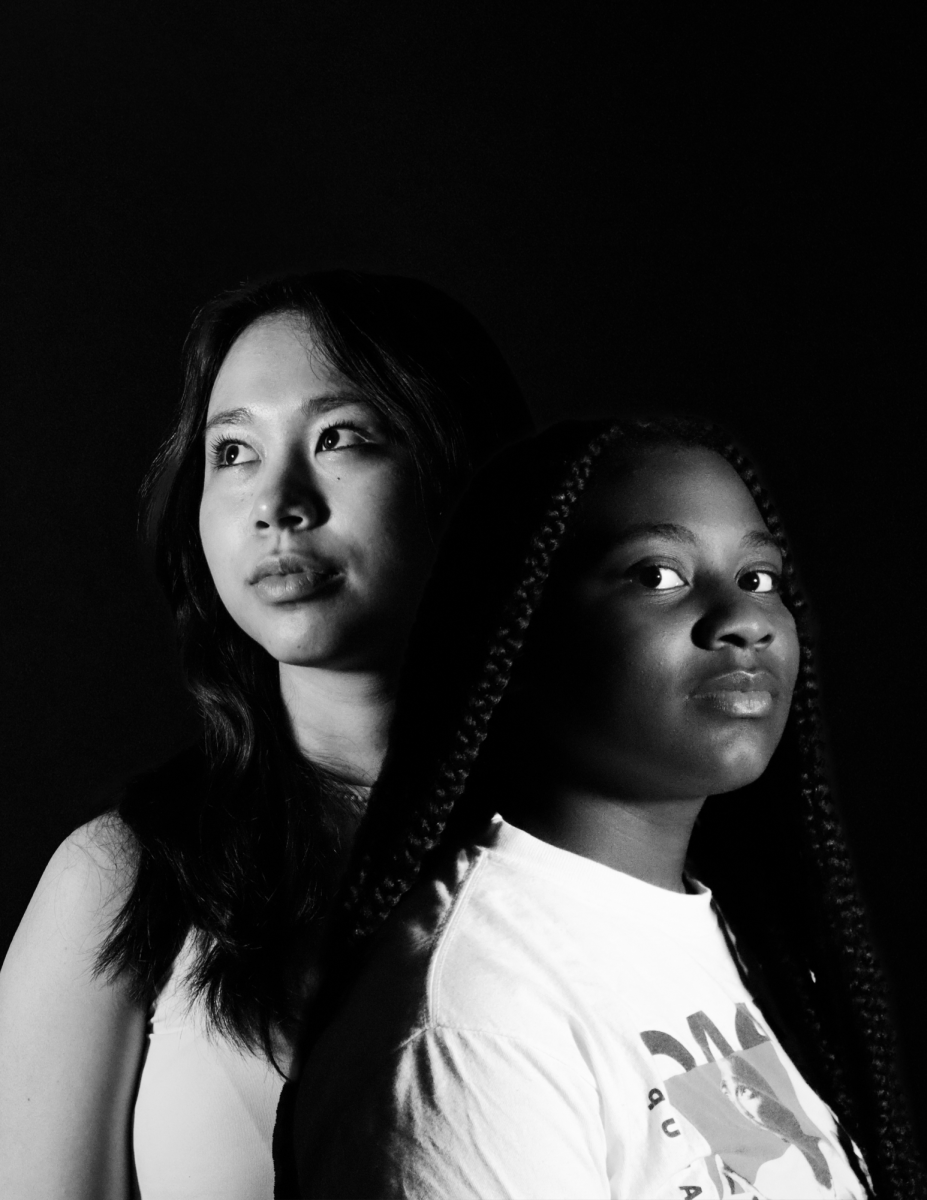As the date draws nearer to Oct. 10, the day the Board of Education will vote on whether or not they will continue enrolling students in the Voluntary Student Transfer program for the next five years, it is time yet again to examine the program itself. There are often parts of the VST program that seem convoluted, and there are many misconceptions and questions that surround it. In the midst of such confusion, it is important to separate fact from fiction.
In our findings for the story, we have tried to uncover the truth about the program. We acknowledge that this is a difficult issue, due to its tricky relationship with race, a very sensitive topic. However, it is the issue of race that makes the VST program so important—not only the racial diversity that the program provides, but every type of diversity. Indeed, the program as a source of diversity certainly is one of its main selling points.
There are several aspects of the VST program that we will focus on: the logistics, finances, diversity, achievement and opinions surrounding the program. All are vital to understanding the program itself and the complexity of its nature. By taking a holistic view of the program, one is better able to see its role in the Clayton community and understand what considerations will likely drive the BOE’s vote.
The story of VST began with the 1972 court case, Liddell v. Board of Education for the City of St. Louis. The U.S. Court of Appeals declared that the St. Louis Public Board of Education and the State of Missouri were responsible for having a segregated school system. In 1981, the Appeals court, along with the parties to the litigation, came up with a remedy. A voluntary interdistrict plan that would transfer African American students from the City of St. Louis into generally white St. Louis suburban districts and white suburban students into magnet schools in the city. The program required a quota of city students in each county school district under the Court’s jurisdiction. A Settlement Agreement was reached in 1983, and the Voluntary Interdistrict Coordinating Council was born, which oversaw the transfer of the students.
That Court-supervised phase of the interdistrict plan ended in 1999, when a new Settlement Agreement was reached among the party districts which chose to remain in the plan, and the federal court ended its role in the case. The program became truly voluntary, and the program was renamed as a non-profit organization, the Voluntary Interdistrict Choice Corporation. The VICC accepts students into the program on a lottery basis.
In 2004, due to a dramatic reduction in state funding for the program, the amount of money Clayton received from the state was cut in half. The BOE considered phasing out the program and replacing it with a more financially beneficial alternative, but due in part to the lack of such an alternative and the evident community support for its continuation, including a CHS student walkout that year, the program was continued. The budget has stayed the same since.
In 2008, the District voted to extend the program for another five years, although it decided to only accept new VST students at the kindergarten and 6th grade levels, as opposed to at all grade levels, as they did in the past. This year, there are 371 students enrolled in the District through the VST program (142 of which are at CHS), which is about 15 percent of the student body.
Money Issues
The financial aspect of the VST program is certainly an important part of the program that is often discussed at length. Although there is a common misconception that the VST program loses the District money by having to pay for non-residential students to come to the school, in reality, the case is quite the opposite.
An accurate metaphor for the program, described by former Chief Financial Officer Mark Stockwell of the District, is that of an airplane. A school, like an airplane, costs the same amount of money to run no matter how many seats are occupied. Therefore, the program works only to fill the unoccupied seats of Clayton’s classrooms with VST students. The District receives a reimbursement of $7,000 per student who comes through the program, which amounts to about $2.7 million total per year, or 5.2 percent of the District’s budget. The District is reimbursed by VICC, who receives the money from the state that would have been paid to Saint Louis Public Schools for the students enrolled in the VST program. Since the reimbursement ultimately adds to the District’s revenue, the program is in fact financially beneficial.
An alternative and possibly more beneficial option that the BOE has looked at in the past has been to stop accepting VST students and to instead fill those empty spots with tuition students, who pay $10,000 to $16,000 per year, depending on grade level, to come to Clayton. That option became much more enticing in 2004 when the reimbursements for VST were cut almost in half.
Although $7,000 per year is less than the $10-16,000 per year that tuition students pay, the fact that there is a constant supply of students from VICC ready to fill empty seats outweighs the fact that tuition students pay a high price individually because of the unpredictable volume of tuition students.
“It’s not quite like you can get rid of the VICC program and you’re going get tuition kids to replace [the VICC students],†Clayton’s Chief Financial Officer Mary Jo Gruber said. “The demand is completely different. I mean we’re never going see 360+ tuition students. The initial thought was that the two could be interchangeable, but over the past eight years, we’ve realized that’s most likely never going to happen. There’s not a demand for 360+ people to pay $10-16,000 per year to go to Clayton.â€
Because the VST program is able to draw a higher and more predictable number of students, it is ultimately able to raise more revenue than a tuition program.
“Based on the demand we’ve seen, we just don’t see that [the tuition program] would be a complete replacement of the funding,†Gruber said. “If we ended the VST program the tuition program would not regenerate all of that revenue or fill all of those spots.â€
Naturally, the question arises whether VST students currently take priority in taking empty spots over tuition students, and the answer is yes. However, since the only grades in which VST students are being enrolled are kindergarten and 6th grade, there is minimal conflict.
“So when you start talking about tuition kids, those are the only places you can kind of exchange them and I don’t think we had any students on the waitlist at Wydown this year at 6th grade, and there were four at kindergarten,†Gruber said.
Although it is clear that finances are an important element of the equation, it’s equally evident that there are other issues about the program that the BOE is more concerned with.
“I don’t think they’re hanging their hats on the finances in order to make this decision,†Gruber said. “The finances are important, [and] the good thing [is that it] generates revenue … and we know there’s no replacement of it, so it’s more of a philosophical question.â€
Other aspects of the program, such as the diversity and achievement pieces are not as clear-cut, however, as the financial aspect. These facets are much more difficult to evaluate, and must be examined in a careful, nuanced manner in order to obtain a more accurate, holistic view of the program.
An important feature of the program is its role in cultivating diversity at Clayton, which is one of Clayton’s guiding principles and thus has always been a defining part of a Clayton education. Superintendent Sharmon Wilkinson spoke highly of the program’s contribution to diversity.
“Our community has spoken to the diversity,†Wilkinson said. “I think that education in a diverse environment helps to mirror the world in which we live.â€
CHS history teacher Samuel Harned agreed with Wilkinson in that the program will affect students in ways that reach beyond the walls of CHS.
“In the adult world, you’re going to meet many different kinds of people,†Harned said. “The more different kinds of people you meet at school, the better it’s going to be. It gets you used to diversity. The world’s going to be full of different people, [so] it’s best to learn how to deal with that.â€
Assistant Director of Student Services Greg Batenhorst agreed with Wilkinson that the program allows the students to gain new perspectives that they would not otherwise have seen. Batenhorst does not see a reason to stop such a successful program.
CHS Interim Principal Dan Gutchewsky agreed with Batenhorst in that the program is valuable to all students in the community.
“When we’re surrounded by people just like us,†Gutchewsky said. “It doesn’t give us the chance to grow.â€
Besides the diversity afforded by the program, an invaluable aspect of the program is the personal effect that it has on the lives of students who come through the program. For CHS alum Montel Harris ’12, a graduate of the program who came to Clayton in kindergarten, his experience in the school district was life changing.
“Academically, I’d say that Clayton provides one of the best educations,†Harris said. “Honestly, I think if I didn’t go to Clayton I wouldn’t be going to Saint Louis University right now and I wouldn’t be living the great life that I have now. Personally, I’ve met wonderful people here … it’s why I love this place so much, it’s why I’m definitely connected to Clayton High. There’s no doubt in my mind if I hadn’t have gone here I wouldn’t have made all of the good decisions and everything in my life – I wouldn’t have been an actor, I wouldn’t have wrestled, I wouldn’t have been a singer. Clayton High is invested in me and I have invested in it.â€
Another current VST student, senior Aaron Adams states unequivocally that Clayton provided him a much better education than he would have received in a St. Louis City Public School. He went on to say that many of his friends who have graduated from CHS have told him that the education they received in the Clayton schools prepared them well for college.
Junior Ida Jones, another CHS student who has been in the VST program since kindergarten, agrees with Harris that her Clayton education has been invaluable.
“My family is able to see me doing well in a school that I love, instead of being involved in the troubles that some city schools encounter,†Jones said.
Harris attests to the difficult environment in some parts of the city that Jones referred to. Growing up, Harris heard at least one gun shot a week outside his bedroom window. However, being a Clayton student inspired Harris to be “more†than where he came from, and he would like more students to be able to have the empowering experience of attending Clayton schools.
“I know there was that feeling of coming to class, every single day, even when there were the days that I didn’t really want to come to class, I still felt, ‘Hey I’m a Clayton student, I need to do this because I can help change something,’†Harris said. “There was that feeling of being able to do something that really inspired me.â€
Mind the Gap
Although there are many positive aspects of the program, these are accompanied by a host of problems. Batenhorst is concerned, as is Wilkinson, about the achievement gap.
“The achievement gap is still the biggest thing out there that needs our attention,†Batenhorst said. “But we are working hard with the principals to make sure we address that.â€
The District is continually making improvements to close this gap. Administrators look at data from teacher’s tests, MAP tests, EOC’s, the PLAN, and the ACT to see where students struggle and what possible interventions can be made. Some test scores recently recorded accurately portray the sort of academic achievement gap seen between VST students and the rest of the school.
According to the VST Report for the School District of Clayton BOE, in 2012 the average ACT composite score for VST students was 19.9, while for the school overall it was 25.8. Other telling statistics include MAP scores (see line graphs). Although MAP scores didn’t separate VST students, and instead separated by race, by the nature of the program and the demographics of the district population it is accurate to say that the majority of African American students tested at Clayton were VST students.
Despite the obvious gap in scores, it is also wise to take into account that compared to the MAP scores in 2011 of VST students in other districts, Clayton often ranked first or second. Batenhorst also believes that viewed from another angle, that of preparing the VST students for the future, the program has been a success.
“It’s interesting to look at what students who are in the program are doing after graduation. We have quite an impressive list of colleges they are going to 67 percent are going to four year schools,†Batenhorst said. (See pie chart for details).
Batenhorst also stressed the importance of the individual learner.
“You don’t want to look at what is the gap,†Batenhorst said. “You want to look at what is the level of proficiency that we as a district expect of all of our students and are we meeting that need.â€
While Batenhorst and Gutchewsky believe our attention should not be directed solely at the gap, Wilkinson said that the gap is simply bigger than the District.
“It’s a gap that is national,†Wilkinson said. “We have our students who are graduates and achieving and going on to four year colleges and universities. People talk about that gap but we just want to make sure that we provide a high quality education for each child.â€
CHS Interim Principal Dan Gutchewsky agreed with Wilkinson and also stressed the importance of the individual learner.
“We don’t want to just focus on a gap between a group of students,†Gutchewsky said. “We’re looking at the individual needs of the student, not on the needs of the group.â€
There have been efforts by the District to help struggling students within the VST program. The District has had programs in the past targeted towards helping struggling VST students in general, and this year also emphasized building relationships with parents. However, Wilkinson said, one of the problems in targeting a group is the difference in the individual needs of all the students.
“One of the things we did this year was we invited all of the parents of students who are new to the VST to meet to talk about what education is in Clayton and expectations,†Wilkinson said. “It was a way to welcome the parents to the District … But the problem you have with this experience is that every parent has a different background, so every student that comes through the VST also has a different background and experience, so again that is why if you think about how you serve the needs of all students that anyone who is coming into the District is bringing their own experiences with them.â€
Final Thoughts
In the end, it is important to remember that when looking at the VST program, one must see it in a holistic manner by thoughtfully assessing all of its components, strengths and weaknesses, and not focus on simply one specific aspect. The next BOE meeting on Oct. 10 will determine the fate of the program for the next five years.
When considering the program’s influence on the entire student body, it is important to remember the fact that a student’s education is comprised of an amalgam of experiences dictated by their environment, and ought not to be evaluated by simply raw statistical data.
Eudora Olsen, Katherine Ren, Jessica Bluestone and Rachel Bluestone also contributed to the reporting of this story.
Bus photo by William Wysession, Photo of students by Olivia MacDougalÂ








